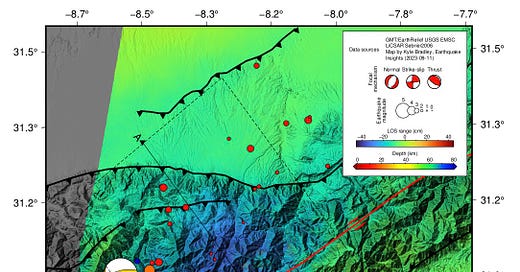Satellite images suggest slip on a steep, north-dipping fault in Morocco
The Tizi n'Test Fault is a famous fault with a long geological history
Citation: Bradley, K., Hubbard, J., 2023. Satellite images suggest slip on a steep, north-dipping fault in Morocco. Earthquake Insights, https://doi.org/10.62481/733c5fe2
Keep reading with a 7-day free trial
Subscribe to Earthquake Insights to keep reading this post and get 7 days of free access to the full post archives.




